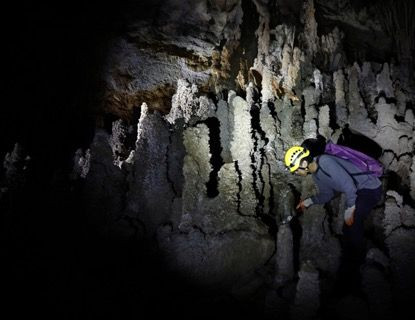Earth's Magnetic Field Reversal Could Be More Rapid Than Thought, Study Reveals

An international team of researchers has found that Earth’s magnetic field, generated by material flowing in its core, can reverse more rapidly than previously thought, posing a major threat to ground and space-based infrastructure.
For years, scientists have known that the magnetic field of our planet plays a critical role in protecting our sophisticated satellites and communications systems from harmful solar wind and radiation. Occasional outbursts from the sun send streams of charged particles hurtling toward our world, but the magnetic field comes in between and deflects most of them.
However, the flow of liquid iron in Earth’s core — the material generating this field — can sometimes lead to its complete reversal or the situation where the magnetic north pole becomes south and vice versa.
While scientists have long known that such a change can leave Earth unprotected, the latest study conducted by researchers from Australian National University, National Taiwan University, and Southern University of Science and Technology in China is adding a further cause of worry.
The group analyzed an ancient rock called Stalagmite and found that Earth witnessed some rapid flips in the magnetic field in the past — fluctuations that were quicker than what has been estimated.
Till date, it was believed that polarity transitions occurred over thousands of years, with at least one complete reversal taking place some 773,000 years ago and several shorter flips — fluctuations to the point of complete transition — occurring in the ensuing years. These shorter events didn’t mark a permanent change in polarity but sent both ends drifting.
However, when the team conducted magnetic analysis and radiometric dating of the rock discovered in Southwest China, they were able to trace Earth’s geomagnetic history between 107,000 to 91,000 years ago. A close look at the 16,000-year-long data revealed that during the period, the polarity flipped just within a couple of centuries some 98,000 years ago.
This, as the researchers described, was nearly 30 times faster than a generally accepted time required for polarity flips and 10 times faster than the fastest rate of change. The team also noted that the strength of Earth’s magnetic field declined by about 90 percent when these changes occurred.
“The record provides important insights into ancient magnetic field behavior, which has turned out to vary much more rapidly than previously thought,” study co-author Andrew Roberts said in a statement.
Earth’s magnetic field strength has declined by about 10 percent over the last century and if such rapid flips are any indication, something similar could happen in the future, too. However, before drawing conclusions regarding the repetition of such rapid flips in the magnetic field, scientists have to conduct further studies to delve deeper into the processes behind polarity transition and how often they occur.
“Hopefully such an event is a long way in the future and we can develop future technologies to avoid huge damage, where possible, from such events,” Roberts concluded.
The study, titled “Multidecadally resolved polarity oscillations during a geomagnetic excursion,” was published August 20 in the journal PNAS.

© Copyright IBTimes 2025. All rights reserved.





















